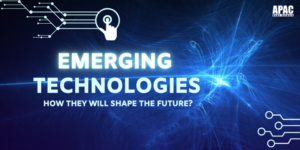Unlocking the Future: The Benefits of Brain-Computer Interface Technology

Brain-Computer Interface (BCI) technology, which enables direct communication between the brain and external devices, is revolutionizing the way we think about human-computer interaction. By decoding brain activity and translating it into actionable commands, BCIs offer groundbreaking possibilities in fields such as healthcare, communication, and robotics. While BCIs are still in the early stages of widespread use, their potential benefits are both far-reaching and transformative. Here’s a look at how BCI technology is shaping the future and improving lives.
1. Revolutionizing Healthcare and Rehabilitation
One of the most promising applications of BCI technology is in healthcare. By enabling direct brain communication, BCIs provide new hope for people with physical disabilities and neurological conditions. For instance:
-
Restoring Movement for Paralysis Patients: BCI-powered systems can bypass damaged nervous pathways to restore movement for people who have lost motor function due to spinal cord injuries or stroke. Researchers have developed robotic arms and exoskeletons that can be controlled directly by brain signals, allowing patients to perform basic tasks independently.
-
Managing Chronic Pain and Mental Health: BCIs are also being explored to help manage chronic pain and mental health conditions such as depression and anxiety. By monitoring brain signals associated with these conditions, BCI systems can stimulate specific brain areas or provide feedback to the patient, enabling personalized treatment strategies.
-
Neurorehabilitation: For patients recovering from stroke or traumatic brain injuries, BCIs can accelerate recovery by encouraging neuroplasticity—the brain’s ability to reorganize itself. BCI systems can engage and strengthen neural pathways, improving motor and cognitive function over time.
2. Enhancing Communication for People with Disabilities
For people with conditions like ALS (Amyotrophic Lateral Sclerosis) or locked-in syndrome, traditional methods of communication may be ineffective or impossible. BCIs offer a lifeline, enabling these individuals to communicate using their thoughts alone.
-
Speech and Typing via Brain Signals: BCIs can decode specific neural patterns to allow patients to “type” or “speak” by simply imagining the movements involved in these actions. This groundbreaking development enables users to interact with loved ones and caretakers, improving their quality of life and autonomy.
-
Independent Control of Assistive Devices: BCIs enable users to control assistive devices such as wheelchairs, computers, and home automation systems, all through their thoughts. This empowerment fosters independence and helps people manage daily tasks without constant physical assistance.
3. Transforming Education and Learning
In the realm of education, BCIs could transform traditional learning by tailoring it to individual students’ mental states and learning needs.
-
Personalized Learning: BCIs can monitor student engagement levels in real time, allowing educators to adjust their methods to improve attention and retention. For instance, if a student’s attention is waning, the BCI could alert the teacher to introduce more interactive or stimulating activities.
-
Improving Focus and Memory: BCIs have been found to aid in cognitive training, improving memory, and focus. Programs designed with BCI technology can guide students through exercises that enhance concentration and information retention, paving the way for more efficient and personalized learning experiences.
4. Advancing Workplace Productivity and Safety
BCIs also have the potential to enhance workplace productivity and safety by tracking employees’ mental states and helping them stay alert.
-
Monitoring Mental Fatigue: BCIs can detect signs of mental fatigue and alertness in real-time. For industries requiring high levels of focus, such as aviation, trucking, or even assembly line work, this technology could prevent accidents and improve safety standards.
-
Boosting Creativity and Problem Solving: Some experimental BCIs aim to stimulate brain areas associated with creativity and problem-solving. By identifying patterns associated with “eureka” moments, these systems could help users tap into creative insights more consistently.
5. Expanding Human Capabilities and Cognitive Enhancement
Beyond medical applications, BCIs hold promise for enhancing everyday cognitive abilities, potentially leading to new possibilities for human achievement.
-
Memory Augmentation: BCIs may help improve memory retention or recall by stimulating specific brain regions. While still in the experimental phase, this concept hints at potential enhancements in memory and learning.
-
Augmenting Physical Abilities: BCIs can connect the human brain to robotic limbs, providing control over prosthetics with near-natural precision. This opens up a realm where human physical limitations could be augmented, not just for people with disabilities but for anyone interested in enhanced physical capabilities.
6. Enabling New Forms of Entertainment and Gaming
Gaming and entertainment have long been at the forefront of emerging technologies, and BCIs are no exception.
-
Immersive Gaming Experiences: BCI technology enables players to control games using brain signals, creating a level of immersion and interactivity that goes beyond traditional controllers. Gamers can control avatars, navigate virtual worlds, or perform complex maneuvers simply by thinking about them.
-
Enhanced Sensory Experiences: By stimulating brain areas responsible for sensory perception, BCIs can create highly immersive experiences, making games, movies, and VR environments feel more lifelike. This opens up new possibilities for entertainment and educational simulations.
7. Advancing Research in Neuroscience
BCI technology is also a powerful tool for advancing our understanding of the human brain, particularly in fields like neuroscience and psychology.
-
Mapping Brain Functions: BCIs enable scientists to study specific brain functions with a level of precision previously unattainable. Understanding how different brain regions interact during thought processes, emotions, or motor functions can lead to breakthroughs in treating neurological disorders.
-
Accelerating Drug Discovery: By providing real-time brain data, BCIs allow researchers to monitor brain responses to different treatments, accelerating the development of medications for mental health disorders, epilepsy, and other conditions.
8. Ethical and Inclusive Development
BCIs offer an opportunity to address healthcare inequities and improve quality of life globally. They can provide affordable treatment options for people in remote or underserved areas, as BCI-based therapies often rely on software and hardware that can be widely distributed.
-
Accessibility for Marginalized Communities: BCI-driven medical advancements can be scaled, making essential healthcare accessible even in low-resource environments. Initiatives focusing on inclusive development can ensure that BCIs are designed to reach as many people as possible.
-
Ethical Data Use and Privacy: Responsible use of BCI data is essential to ensuring that users’ brain data remains private and secure. By developing clear ethical frameworks, BCI technology can be a powerful tool without compromising individual privacy.
Final Thoughts: BCI as the Future of Human-Tech Integration
The potential of brain-computer interfaces is immense, promising to redefine the boundaries between humans and technology. From helping those with disabilities communicate and regain mobility to unlocking human cognitive abilities, BCIs offer vast benefits across diverse fields. While challenges remain in terms of ethics, accessibility, and technological refinement, BCIs have already demonstrated their potential to enhance our lives. As research and development continue, BCI technology stands poised to transform society, enabling new possibilities and empowering us all in unprecedented ways.






